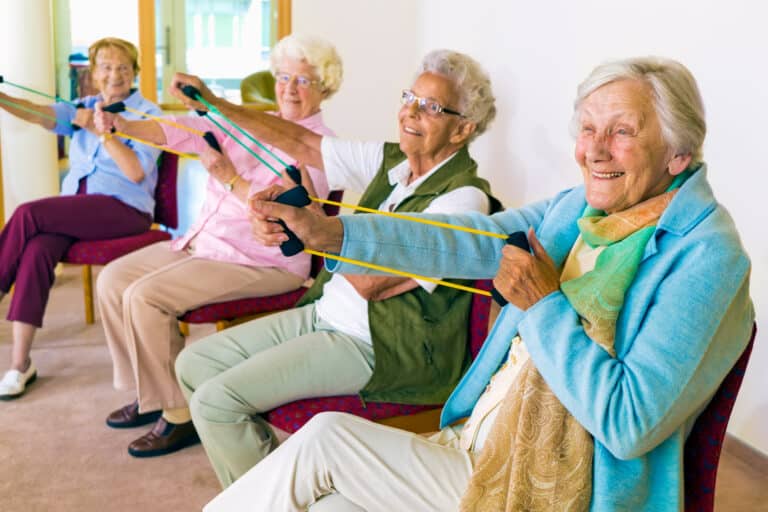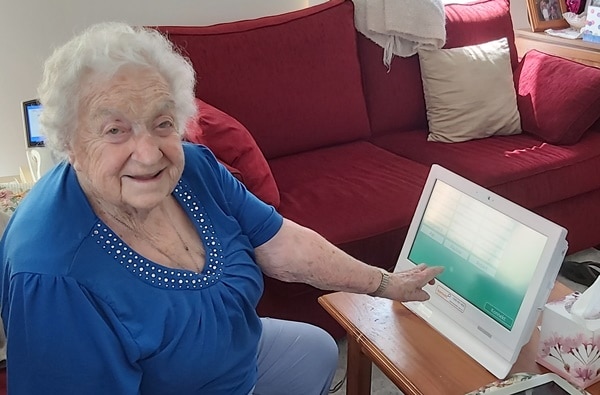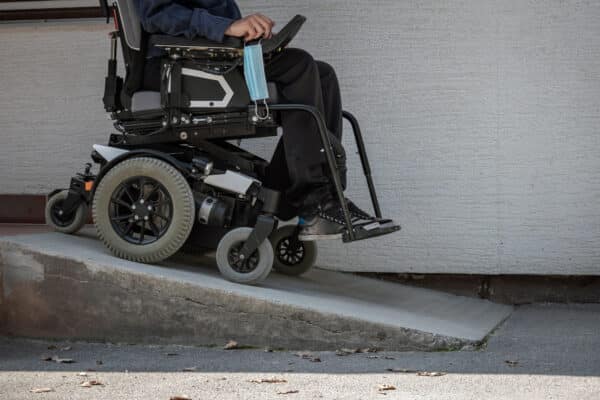Written by Xingyi Wu, Jul 2023:
If one thing’s for certain, aging is a natural part of life.
Yet, it also comes with its unique challenges – one of these being maintaining independence in daily living activities.
According to the World Health Organization (WHO), the number of people aged 60 years and above will have doubled by the year 2050. What’s more, by 2150, it is expected to be nearly three times the current figure.
This sharp increase in the number of aging adults means that there is now a growing need for developing more innovative ways to promote independence in the elderly – that is, action that can lead to better health and wellbeing outcomes for all.
In this article, we’ll look at 5 keys ways of encouraging independence in aging adults, including:
- Encouraging regular exercise
- Promoting social interaction
- Investing in assistive technologies
- Encouraging good nutrition and healthy eating
- Making living environments more accessible
Tip 1: Encourage regular exercise
It’s widely understood that regular exercise is crucial to maintaining good physical and mental health, especially for aging adults.
As the body ages, it’s natural for its various organs, systems and tissues to break down. Thus, keeping up relative levels of strength training, balance and weight-bearing activities help elderly people’s bodies stay in peak relative condition, reducing the risk of injury and disease.

According to the Centers for Disease Control and Prevention USA (CDC), regular exercise can help reduce the risk of chronic diseases such as heart disease, stroke, diabetes, and some cancers. In addition, it’s also widely documented that regular, age-appropriate exercise can also help improve mental health, reduce stress, and improve cognitive function.
Therefore, it remains essential to encourage aging adults to engage in regular exercise. This can often be achieved by taking part in low-impact exercises such as walking, yoga, or swimming – activities that loved ones or carers can also join in.
It remains important to also consider the options that older people now have for engaging in group exercise online – you can check out our article on “5 Activities for Seniors Over Video Call” here.
Tip 2: Promote social interaction
As people age, they may also become more isolated – a situation that can often lead to depression and increased anxiety.
A recent report by Age UK found that around 3.6 million older people in the UK live alone, and over half of them say that television is their main form of company. The advent of COVID has worsened the scenario, with many elderly people forced to exist in increased isolation from their loved ones, friends and support networks.
Increased social interaction among aging adults can easily help prevent these feelings of loneliness and isolation. This can be achieved in many ways, such as:
- Encouraging elderly people to join clubs and attend community events
- Undertaking volunteer work for local organizations and charities
- Exploring the options available to aging adults for them to socialize online
- Visits from loved ones to collect groceries or go shopping
- Utilizing services that provide community transport options, such as those offered in retirement or community-supported living settings
- Online video-calling, appropriate to abilities and accessibility needs
Tip 3: Invest in assistive technology
Technology has made life easier for everyone, including aging adults.
What’s more, specially designed assistive technologies – such as the Konnekt Videophone and Captioning Videophone – can help aging adults remain independent in their daily living activities. Research by the National Institute on Aging USA has also found that assistive technology can help with mobility, communication, and cognitive tasks, covering the broad range of activities that elderly people need to engage in, in order to remain happy and healthy.
Examples of assistive technology include:
- Video phones, devices to assist speech/hearing, and other communication aids
- Wheelchairs
- Stairlifts
- Fall-detection devices
- Medical alert necklaces and bracelets
When it comes to assistive communications technology, the right product can also help family members and support workers to address multiple issues related to the care of the aging person in their life.
Products like those offered by Konnekt deliver multiple features designed especially to help aging people stay connected, including:
- Large 15-inch touchscreen display
- Extra-large 6-inch individual buttons
- One-touch-to-call function
- The ability to call any and all devices, including mobile phones
- Accurate and private captioning available in multiple languages (Captioning Videophone model)

To find out what thousands of happy customers are saying about Konnekt, read our testimonials here.
Tip 4: Encourage good nutrition and healthy eating
Supplementing good exercise and socializing activities, healthy eating habits are also essential for aging adults as they help reduce the risk of chronic diseases and promote overall health.
According to the US National Council on Aging, one in four Americans aged 65 and above is malnourished. These are startling statistics indeed.

It is crucial to encourage aging adults to eat a balanced diet that includes fruits, vegetables, whole grains, lean protein, and healthy fats. Additionally, it is important to encourage the elderly people in your life to drink plenty of water, and limit their intake of salt, sugar, and alcohol.
For elderly parents with memory loss, some daughters / sons use a daily video call as a way to check on hydration compliance, which is vital to good health.
Of course, you should always seek medical and nutritional advice to decide if any particular eating and exercise plan is right for you or your loved one.
Tip 5: Make living environments accessible
Finally, it’s important to recognise that elderly adults may experience mobility issues of increased significance, which can often make it difficult to move around their homes.
Therefore, it’s important to provide the aging people in your life with accessible living environments that can help them move around safely and easily.
A major study by the Australian Institute of Health and Welfare recounted that between 2018-19, 68% of Australians aged 65 and over had at least one disability, with mobility and communication being the most common.
Examples of accessible living environments include installing grab bars in bathrooms, removing tripping hazards, and installing ramps to facilitate wheelchair access.

Wrapping up
Encouraging independence in aging adults is essential to promoting their overall health and wellbeing.
Regular exercise, social interaction, assistive technology, healthy eating habits, and accessible living environments are some of the ways to encourage independence among aging adults. By implementing these tips, aging adults can maintain their independence and continue to live fulfilling lives.
To find out more about how Konnekt’s products can help encourage independence for your elderly loved ones, reach out to our friendly team today.
References:
- “Ageing and health”, World Health Organisation
- “Physical activity for older adults”, Centers for Disease Control and Prevention
- “Later life in the United Kingdom”, Age UK
- “Assistive technology for older adults”, National Institute on Aging
- “Healthy eating for older adults”, National Council on Aging
- “Australia’s health 2020: Older Australians”, Australian Institute of Health and Welfare
